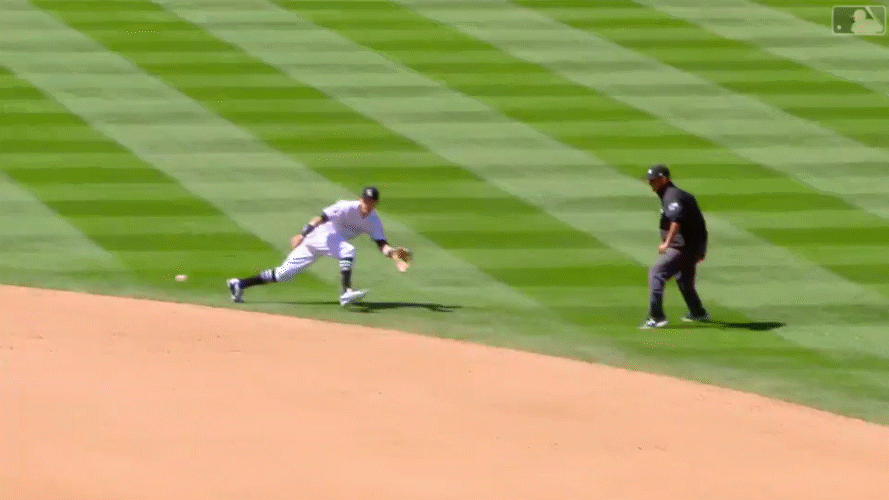© 2025 ALLCITY Network Inc.
All rights reserved.

In a previous Rockies Film Room, we discussed the plate adjustments Trevor Story made to earn his first All Star Game berth in July. In that piece, we mentioned briefly about the steps he’s taken with his defense as well.
But in recent weeks, his long and often pivotal home runs have been crowded with highlight-reel glovework, coming with a Nolan Arenado level of regularity. While he’s always shown flashes of brilliance with the leather in the past, the eye-test says he’s taken it to a new level this season and even more so recently.
As if having Arenado on the left side wasn’t frustrating enough, Story’s range and confidence appear to be improving, increasing the size of the vacuum on the left side and the headaches of opposing hitters.
Just ask George Springer:
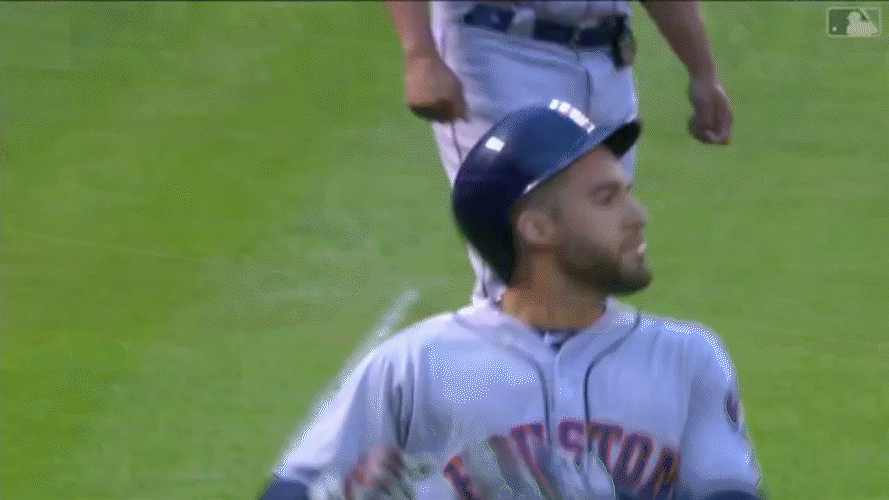
To Story, adding his name to the list of impressive infielders on the Coors Shield roster is important.
“It’s big. Because our pitchers, that’s their game; getting ground balls. We feel like we have a really good infield from every position,” Story told BSN Denver. “We take pride in that. We want to be a good defense behind our pitchers when we get ground balls.”
Story spoke exclusively with BSN Denver about some specific plays he’s made recently and his personal strategy and preferences on defense.
The Backhand
“If I have to jump throw I’ll do it, that’s my favorite.”
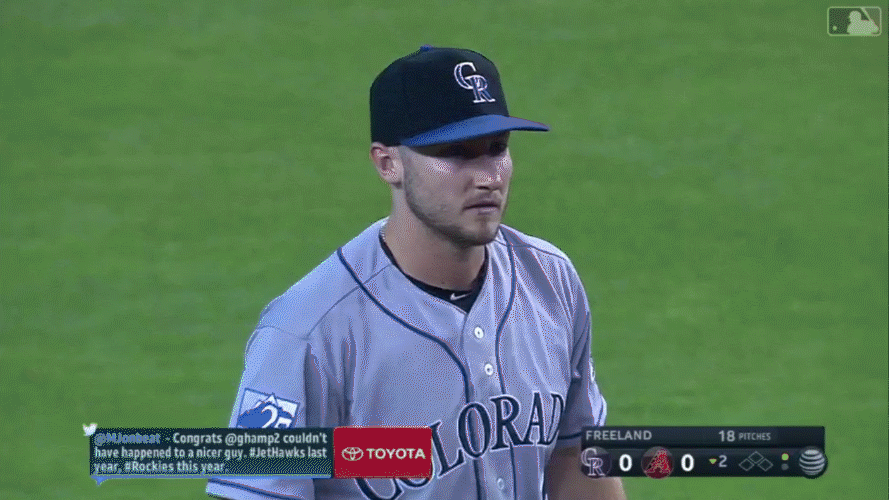
Story robs another decent shortstop on this play in Nick Ahmed, reminding Rockies fans of more than four years of a certain guy who used to hold down the position.
It’s plays like this where a player’s arm strength is truly tested. There’s not enough time to even slow your momentum that is taking you in the entirely wrong direction, let alone plant your throwing foot to really get the most power behind the ball. This doesn’t faze Story, however. It takes confidence to be able and willing to use your hip torque and intuition to even attempt the throw here. It also helps if you enjoy trying to make the play.
“I feel good. I think that’s probably my favorite one, to go back in the hole and backhand.”
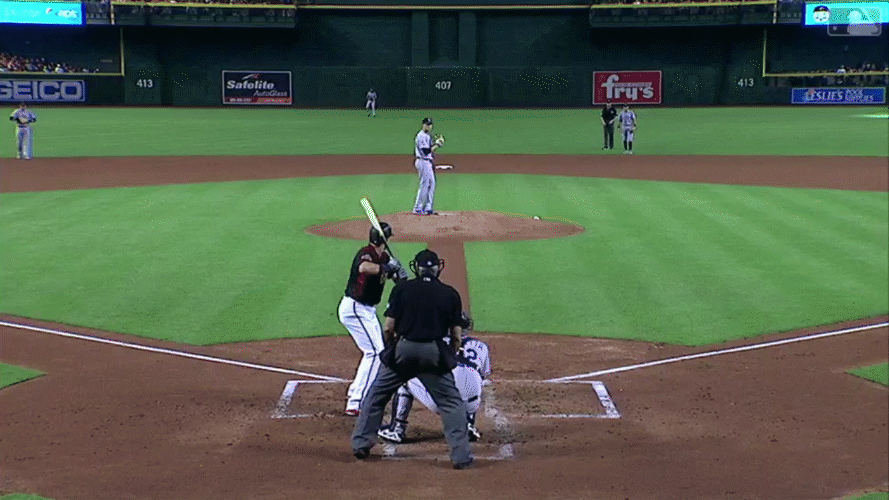
Something we’ll see more of later in the story—but is also essential to this play—is the early break and read he gets on the ball. In the past, Story has described getting an early lean based on what the upcoming pitch will be, getting his momentum going early and increasing his range.
Let’s blow up this camera angle and slow it down as Kyle Freeland delivers the pitch.
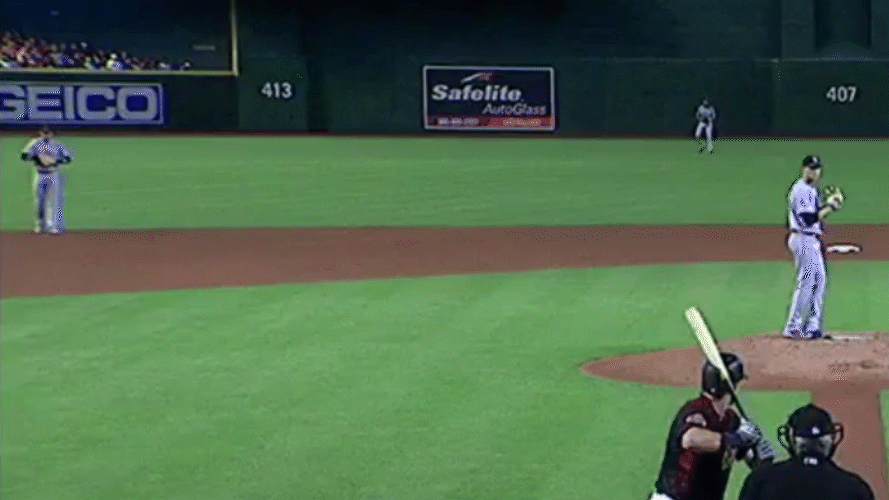
Notice how, before contact is even made, Story is already shuffling to his right. Story knows that if Ahmed pulls the ball, it’s on the ground more than 60 percent of the time. He also knows that Freeland is going to put this fastball on the inner half of the plate, with some natural run in on Ahmed’s hands. All of this adds up to Story getting a head start, moving his weight soon enough to get the benefits of doing so but no so soon as to tip off the hitter.
If he has to extend his reach out for the baseball fielding it, instead of out in front of his torso, the transfer to his throwing hand is going to completely eliminate any fluidity in his motion and make an already difficult throw impossible.
Simply put, this play doesn’t happen without that first step that happens before the pitch even reaches home plate.
Laying it on the line
“If you have to dive and leave your feet and then get up and make a throw, I’d say that’s the hardest.
“The transfer comes into play, and your feet are in a different spot.”
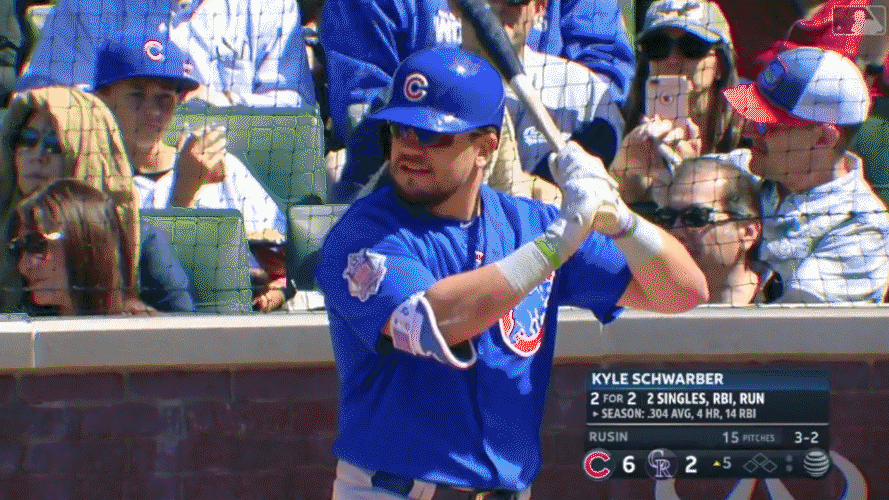
What we saw in the last play and in this one is how Story is getting off throws from awkward positions that are just good enough to record outs. In the Ahmed play his momentum was taking him away from the play and he short-hopped the throw to first baseman Ian Desmond. Here, from a knee with some inertia still taking him toward center field, he puts the throw in a similar spot.
Story, across the two interviews cited in this article, was sure to give proper credit to his first baseman.
“He’s been great, and he’s put a lot of hard work into it. Credit to him for that. We take a lot of pride in our defense, infield and outfield, and Desi’s a big part of that. He’s helped me a lot with errors and he’s helped Nolan a lot with them too. He wants to be really great over there, and he’s pretty good now, so it’s cool to see.
“Desi’s done a lot over there at first, he’s picking a lot of my throws lately. So, I’m just very thankful for him over there.”
But as far as short hops go, that will play. Story doesn’t throw against Desmond’s momentum getting to the base, which would cross him up. He puts it right on Desmond’s pivot foot, which is ideal: first of all, if Desmond misses the scoop, there’s a solid chance his shin knocks it down. But, it’s also easier mechanically if you can work your limbs in conjunction with each other, lining them up as long as possible and minimizing too many parts moving in conflicting directions.
So how does Story place it that well? First of all, he uses the momentum he already has in this case, because even though it isn’t parallel to his target like is optimal, the perpendicular forces can be translated. Where there was nothing to salvage in the Ahmed play, Story allows his left leg to continue toward right-center, opening his hips and then his torso and giving him rotational torque to get his arm across his body and put as much as he can on the throw while keeping his shoulders square to the target to maintain accuracy.
Story had to get creative to nab Kyle Schwarber, who shed a lot of weight this offseason and is coming out of the left-handed batter’s box. Compare that play to this one, with a slower Pablo Sandoval:
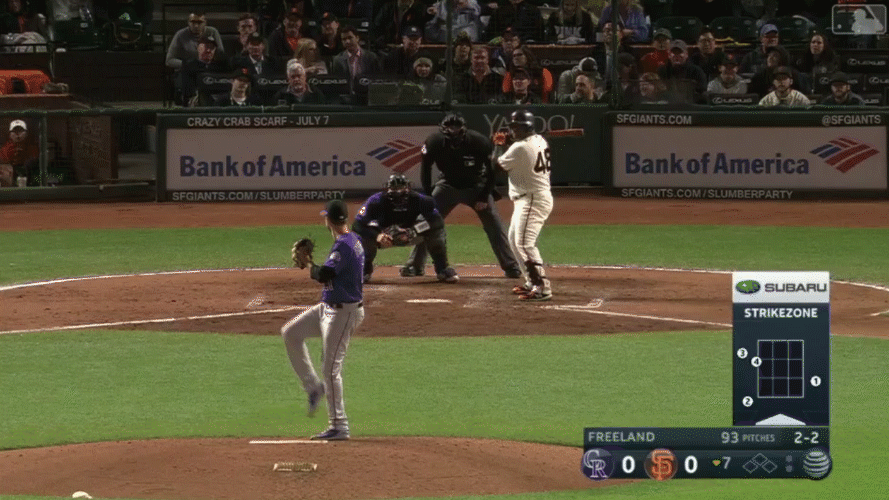
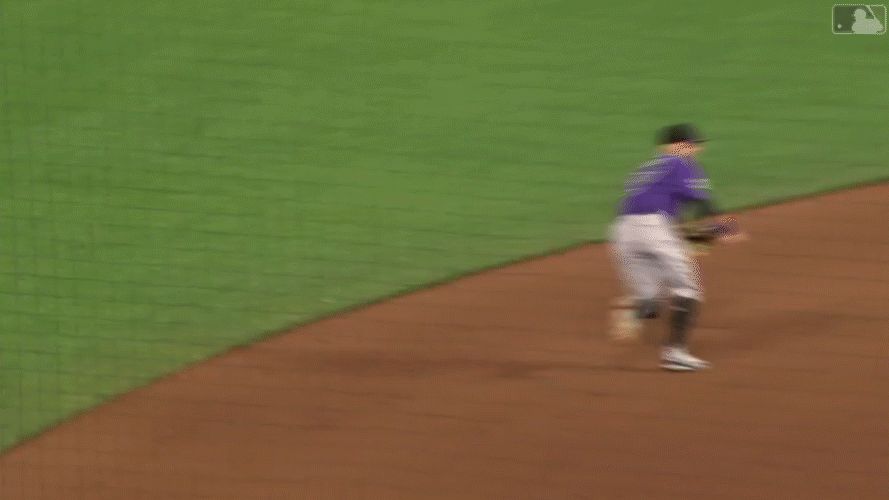
Because Sandoval is slower, Story has time to lift himself to his feet, and benefits from having a cleaner landing as the ball is much lower and therefore in line with his body and momentum. This lets him get a strong drive off his back foot and he fires off a bullet to first.
The other thing to notice on these dives is that Story positions himself to field the ball off his right foot. This gives him more range of motion with his glove and makes coming up with it that much easier. If he’s planting with his left foot, he can’t adapt to an irregular bounce or misread as easily.
On both of these dives, Story positions himself to field the ball with his glove-side foot free to make the play, but also uses his intuition to know if he needs to position himself to get off a throw from the ground or if he can set himself. Intuition and knowing how to come up with the ball, as opposed to just getting to it and playing it by ear from there, puts Story in a position to be successful in both of these plays.
The spin throw
“I practice it a lot. Every day I practice it. It’s kind of just one of those deals, I feel more comfortable doing that than I would having to set my feet after running really hard to get that ball.”
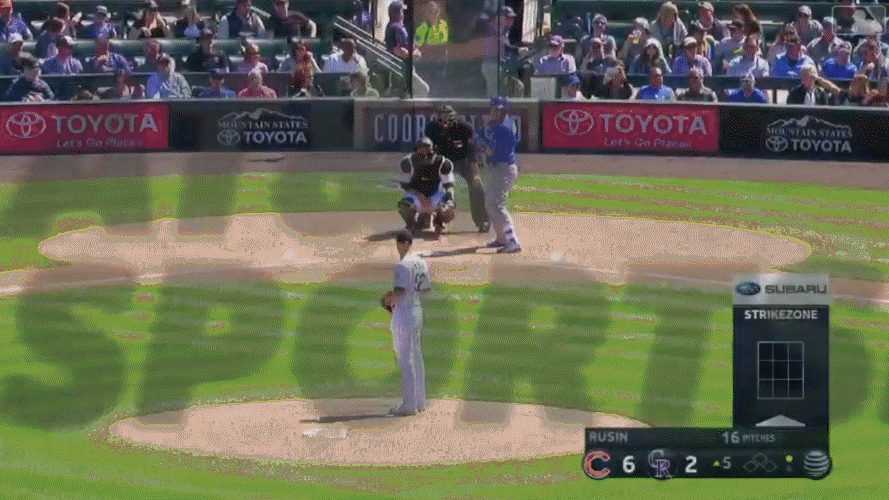
In case it wasn’t immediately clear, this is the play that got Springer fired up in this article’s opening.
Story goes a long way to retire a quick runner, using the same physics of the Schwarber play to get off a quick throw.
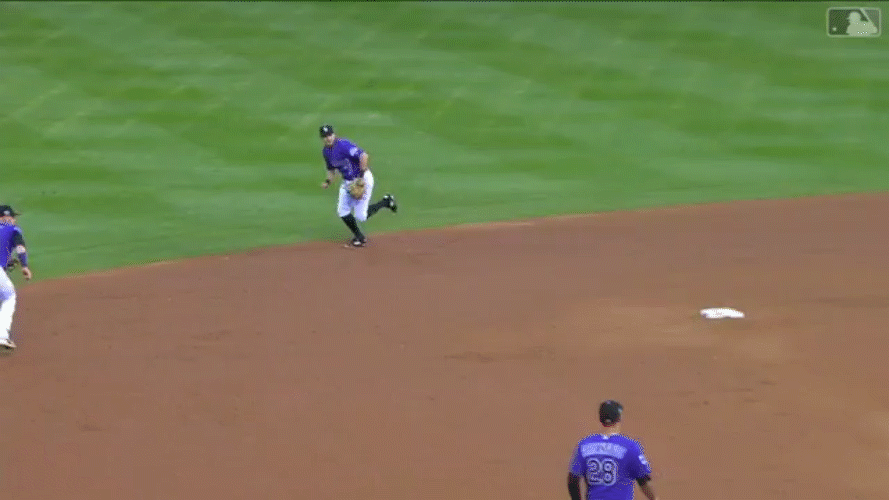
Because he has no time, Story plants off his right foot, again letting his momentum into right-center open his body and get off a strong throw. However, unlike the dives, he has his left foot planted on pickup. In this situation, where getting the ball into possession is probably easier, he can take the ball behind him, letting the rest of his body begin in the process of setting up for a throw as he pulls it in for transfer.
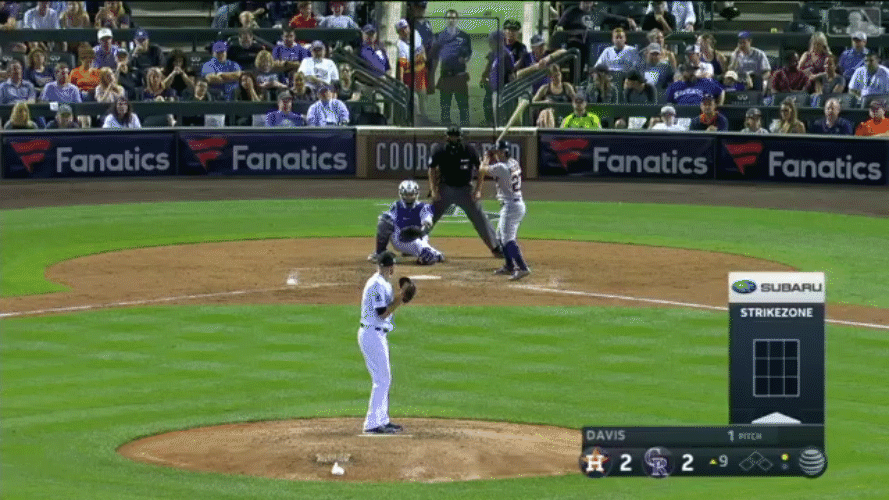
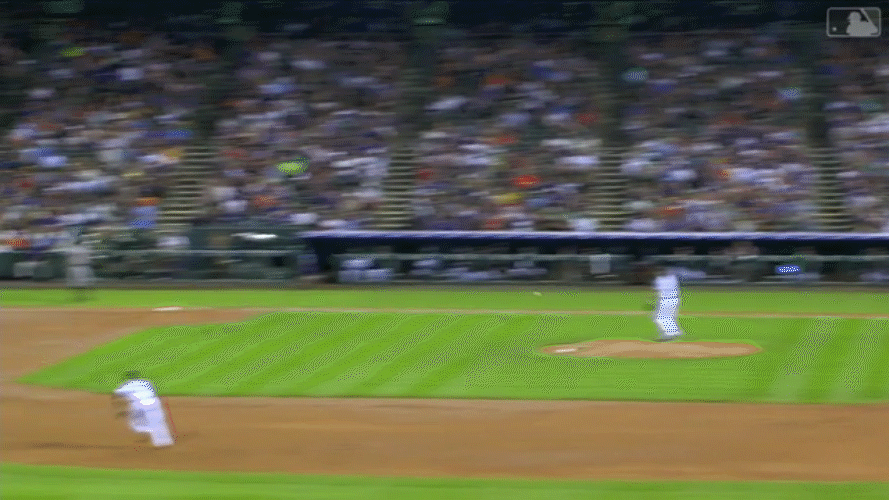
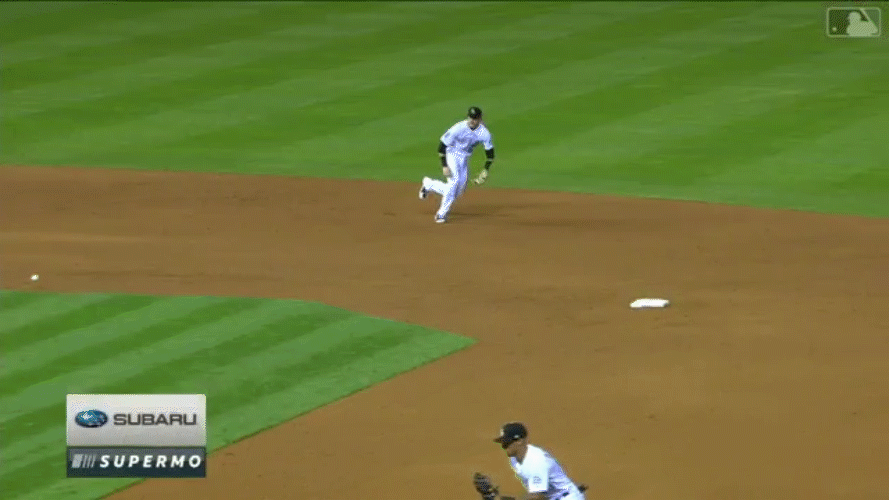
Story picks the ball up off his right foot on this play because he doesn’t have time to set his feet. But he corrects by taking extra strides on the transfer. A lot of the same principles apply. He doesn’t fight the inertia carrying him to right field. He crosses his left leg to begin his spin and make sure he releases at the correct angle, using the rotation to get the throw off.
Of course, none of this works if Story doesn’t know exactly where to place the throw. It’s another intuition he’s developed.
“I just have that feel of where the first baseman is. Sometimes I spin too fast and sometimes the throw will be a little bit up the line. I can kind of see him when I’m spinning and I just try to throw it toward his direction.”
The one drawback of using the motion you already have to get off a strong throw is it makes it difficult to locate. Your footwork and transfer can be perfect, but if you’re aiming for the wrong spot it all comes apart and a fan in the third row gets a souvenir.
Put it all together, though, and this play is quickly becoming Story’s bread and butter.
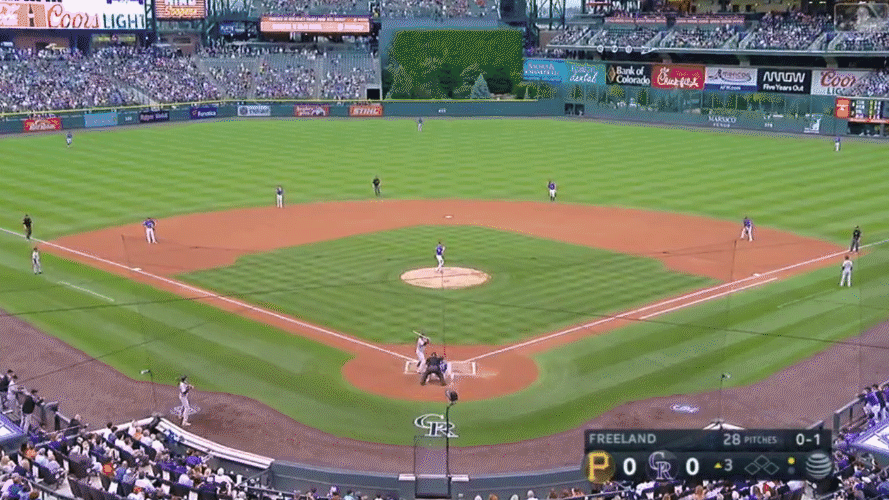
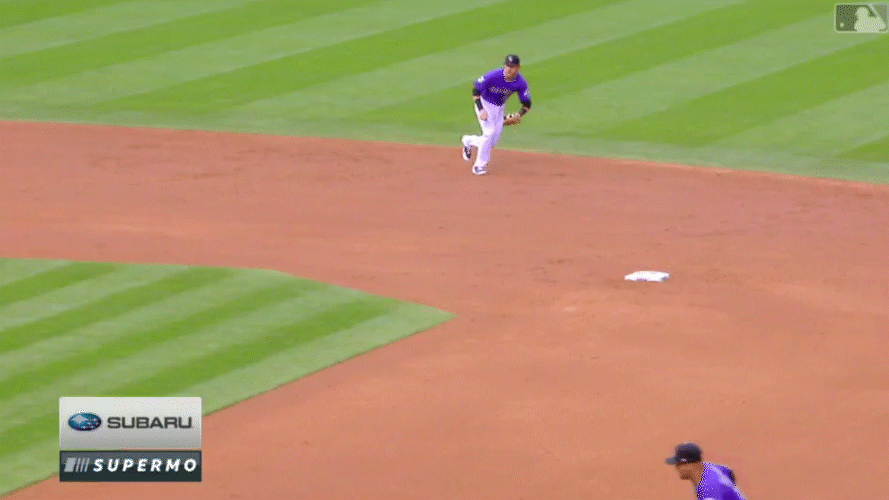
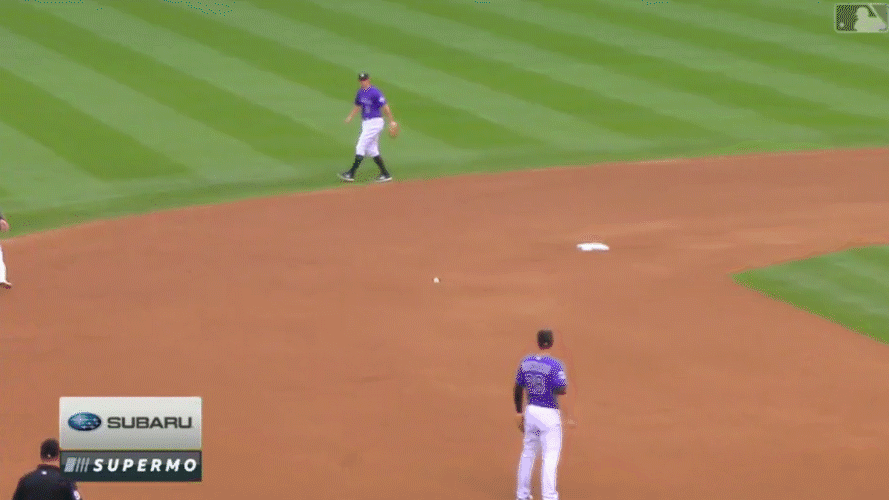
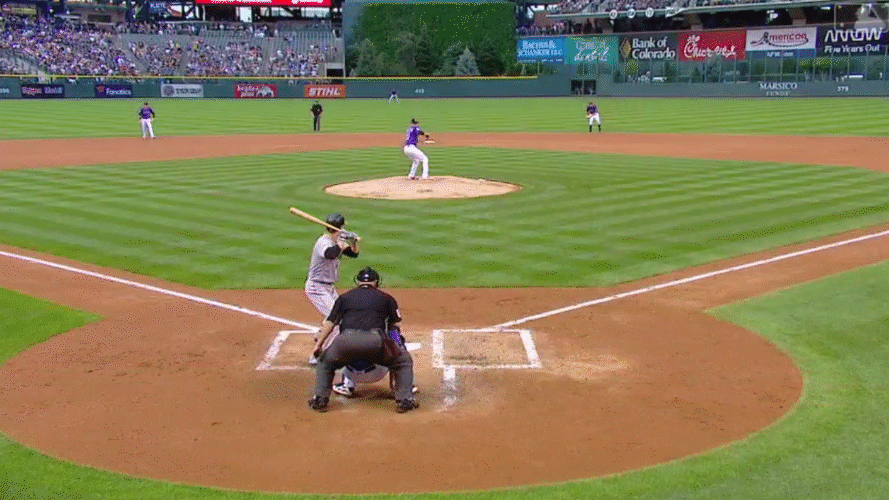
The barehand
“It’s tough to do sometimes. It’s a tough one to practice. But, it’s really all just a feel thing. You’ve got to be aggressive about it.”
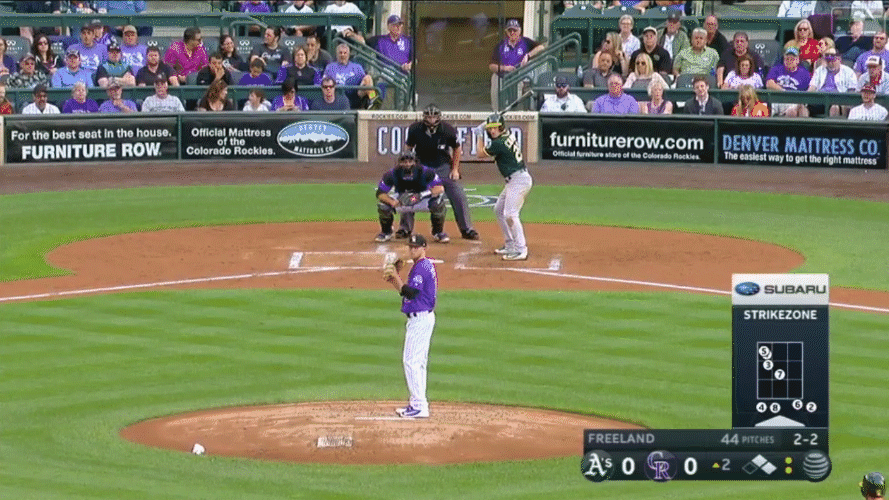
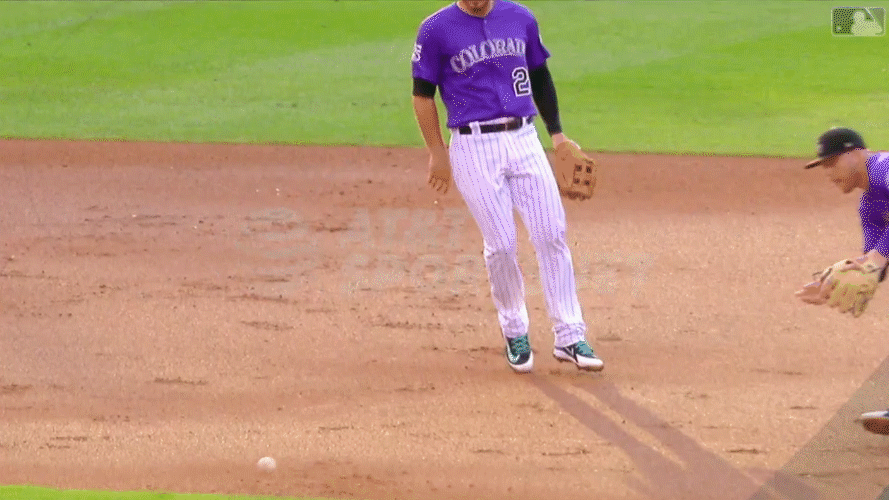
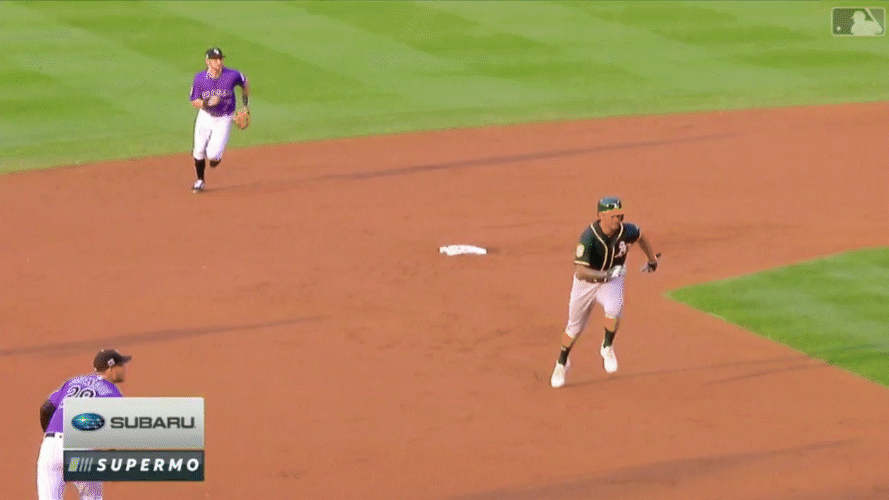
Frankly, there’s not much insight to give on this play. It’s just impressive. Look at the second clip and think about all we’ve talked about in terms of using your momentum to make the throw. Then look at his left leg almost hit his hand as he releases the ball in the most awkward crossfire of limbs I’ve ever seen.
It doesn’t make sense. Story cuts off Arenado, an all-time caliber defender who had a much better angle and could get off a stronger throw. But could he have gotten to the ball in time? It shouldn’t work. It’s completely arm strength, even fighting the rest of his body. It’s the same arm strength that lets him take a pitch below the strike zone and turn it around for a 400 foot home run to dead center, despite making contact with the pitch two feet in front of the plate.
It’s pure desperation, every bit of it needed to get the runner out by the smallest of margins, going down to the ground because mechanically his body has no chance of recovering from it.
“Usually I feel like I can throw and stay on my feet, but that one kind of took a different hop towards third base. So, I kind of had to take my body down with it. It’s just one of those things that you just kind of do it, and whatever happens, happens.”
Story added that on a desperation play like this, there isn’t really any time to think.
“It’s pretty quick. After he hits the ball, within I think a half-second you pretty much know. It all depends on the runner and just knowing some stuff before the play.”
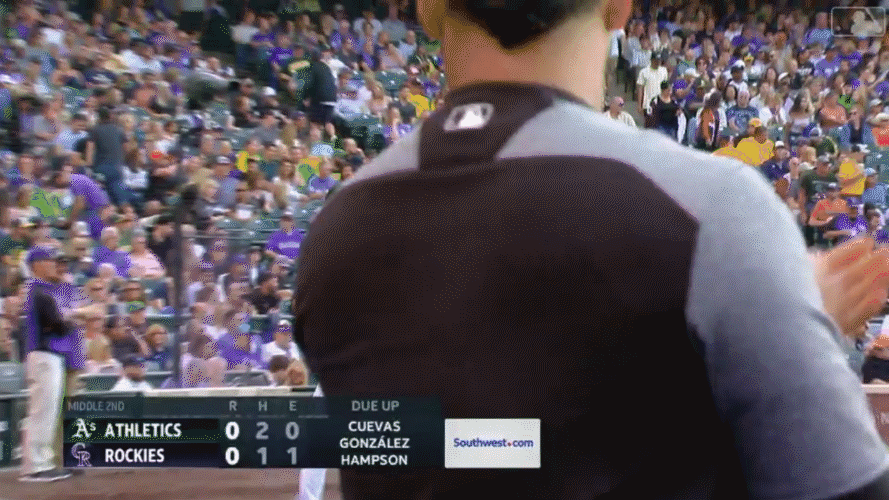
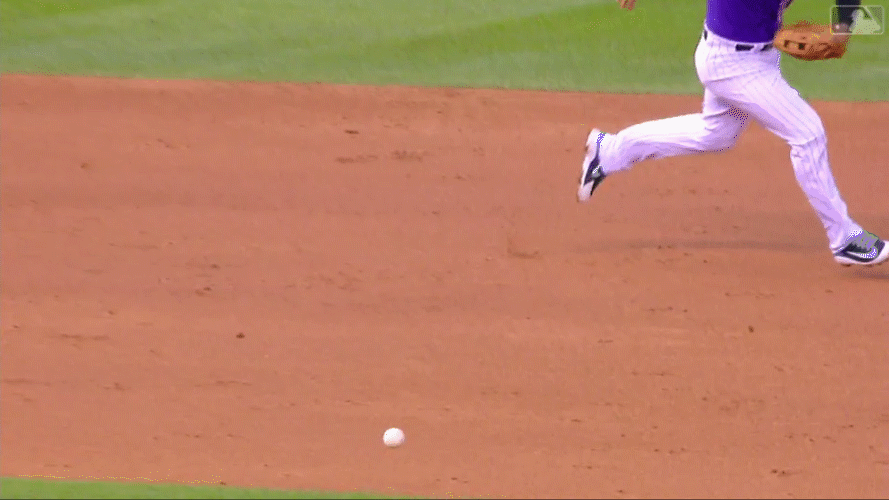
Again, there’s not much to say. If I’m playing shortstop, Arenado is getting priority on that ball 100 times out of 100. It just doesn’t make sense to take momentum away from the play when you have a five-time Gold Glover literally breathing down your neck.
But he gets the out. It works.
Watching these two taking plays from each other should be as exciting to fans as it is infuriating to opposing teams. There’s nowhere to put the ball on the left side to get a hit anymore.
Trevor Story has developed into a defensive shortstop that can go left, right, back and in to get you out. He can salvage so many situations with his arm strength but has the brains and mechanics to optimize himself. He knows how to use his body to his advantage, even when that means letting his gigantic forearms do all the work.
I’m not sure Story is the most deserving shortstop to win the Gold Glove in the National League this year. Defensive metrics, which should absolutely be taken with a grain of salt, don’t like him as much as Brandon Crawford, Trea Turner or Ahmed. And while the metrics aren’t great and possess a lot of flaws, especially when it comes to defensive alignments and shifts, they don’t come out of thin air.
That said, Story certainly passes the eye test, and at the very least is going to be an eyesore for batters and would-be baserunners for years to come.
All clips obtained from MLB.com and MLB Advanced Media
Comments
Share your thoughts
Join the conversation



